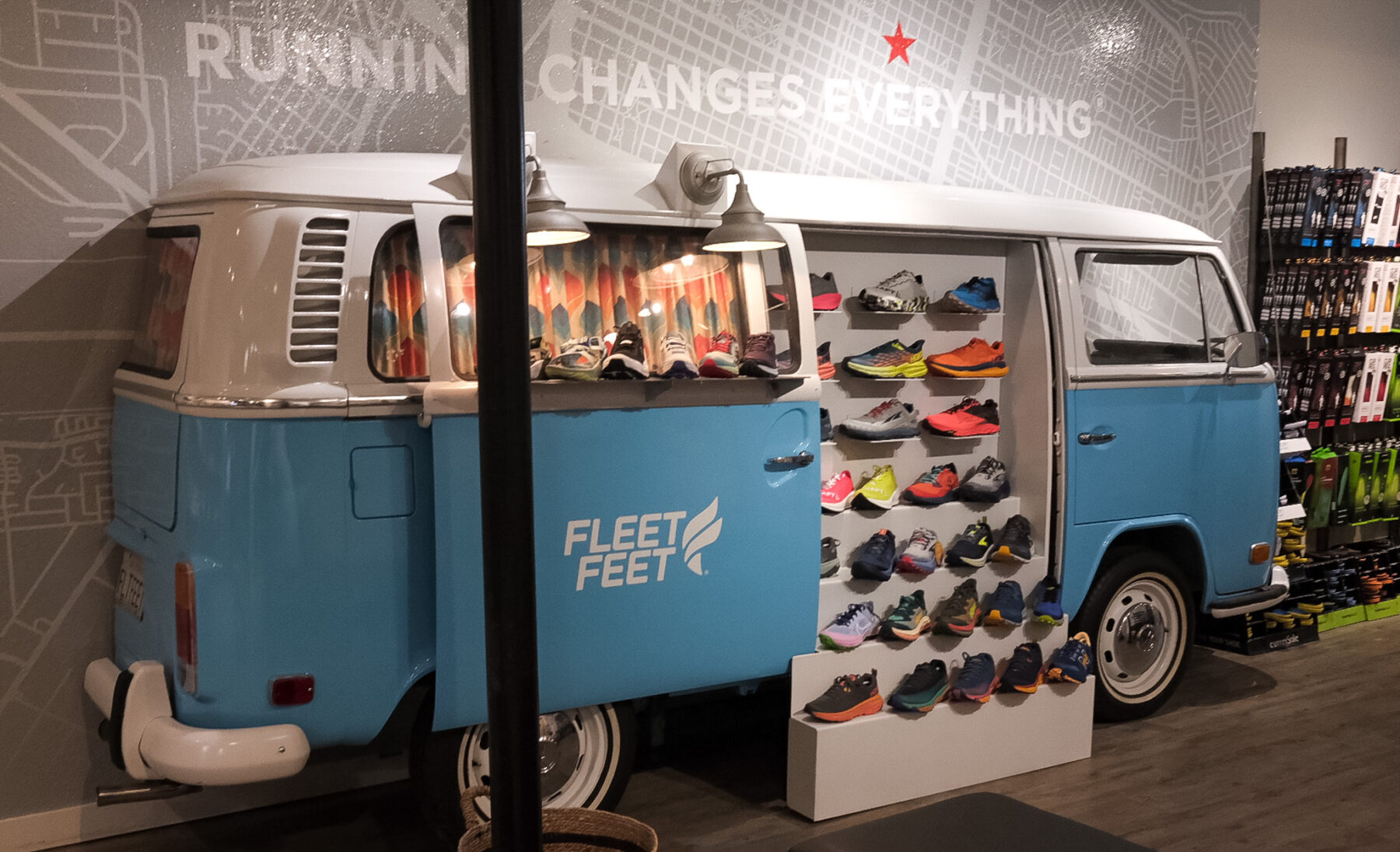
The I-80 feeds into Sacramento like a tributary, one of the several tumbling highways that converge upon the state’s would-be capital, a city that rises out of the arid Central Valley as if it had pooled together calories from nearby farmland to do so. Approaching from the west, one becomes coiled in the mesh of Sacramento’s onramps, underpasses, and bridges with a disorienting immediacy, introduced into the bustling nervous system of California’s fastest growing city without time for much anticipation.
As I thumbed at my truck’s AC, mired in a caravan of mostly idling cars 4 lanes wide and innumerably deep, I was about 40 miles from where I needed to be. The good folks at Fleet Feet of Sacramento were expecting me and I was indefensibly late. Growing up in San Francisco, I had made the drive enough times to internalize how long it would take to travel the roughly 90 miles north. But that was a very different Sacramento, a sleepier version of what’s grown into a driving cultural hub piloted by a younger, more active demographic. If traffic is a measurement of a city’s health, and I think an argument can be made that it is, then Sacramento is as vigorous as they come.
A few weeks prior to finding myself stranded on I-80, staring down the charred tuba-sized exhaust pipes of an even larger truck stalled in front of me, I had arranged to go through Fleet Feet’s state-of-the-art outfitting process, a system, I was told, that would use specialized imaging technology as part of a data-driven effort to match me with the correct pair of running shoes for my feet. As somewhat of a luddite, my attitude toward what sounded like the ill-fated automation of a job I did unblinkingly for several years at San Francisco Running Company was colored by a healthy amount of skepticism. Getting fit for a pair of running shoes felt forever analog, a custom immune to the remoteness of online shopping, a valuable anachronism in a world increasingly designed to keep us at home. “Replaced by a machine,” I snarked to myself, “gone the way of the self-checkout line, the switchboard operator.” Pangs of nostalgia drummed in my stomach as my mind continued to chase these thoughts, the traffic, now in a slow cramp forward, clearly not doing enough to keep me distracted.
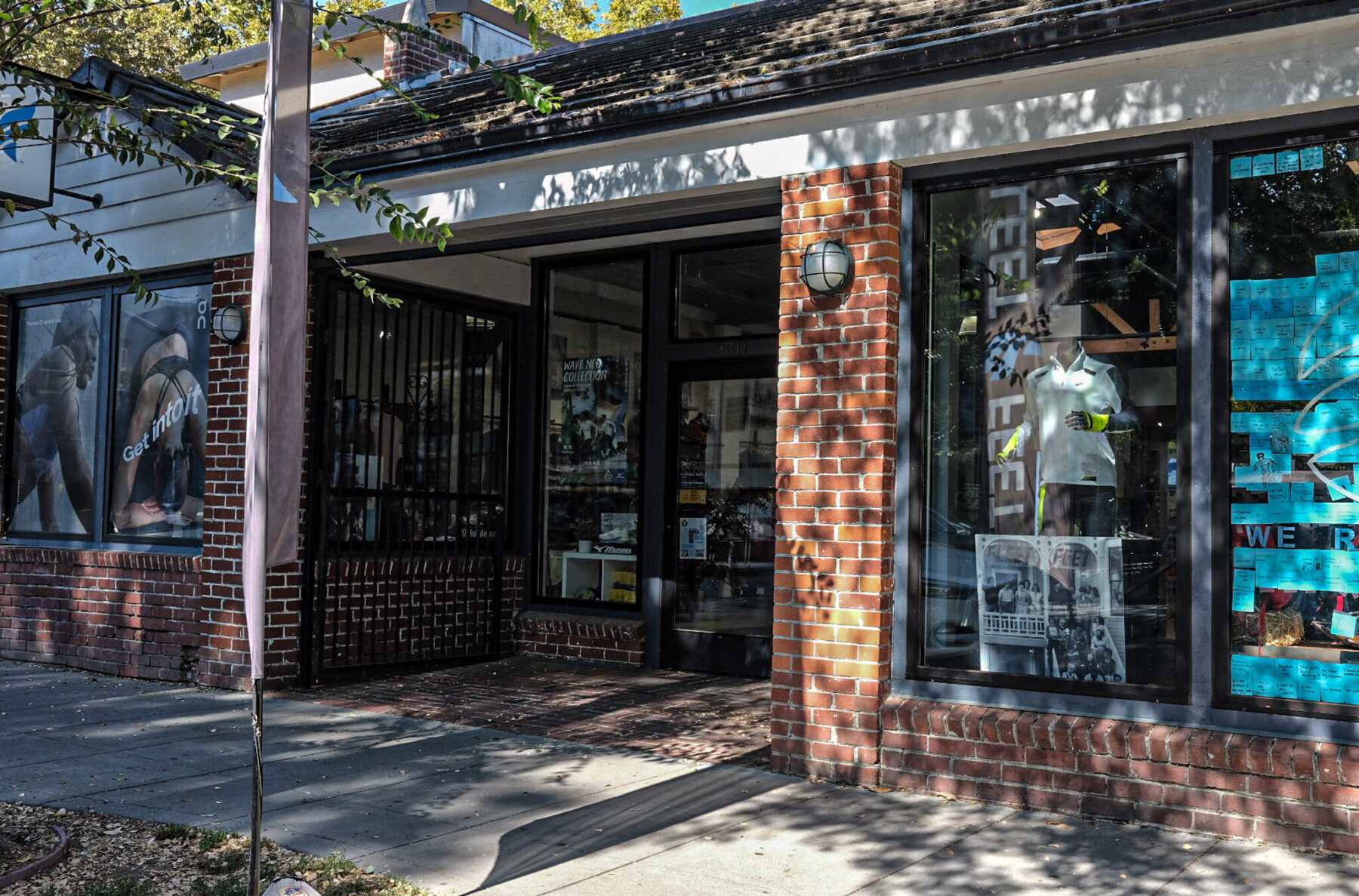
Once past suburban Vacaville, my speedometer began to climb. The ranks of outlet malls crowding the interstate gave way to interminable horizons of rice fields. With motion and space, my thinking found center once again. Orthodox forms of shoe fitting are often practiced as more of an art than a science. Armed with nothing more than a foot measuring device, a rudimentary tool limited in its application to estimating basic length and width, outfitters are expected to diagnose the needs of a runner’s foot at a glance, which often involves a lot of freewheeling and guesswork. The dynamic this sets up also frequently relies on the assumption that runners know the signature of their own feet, a premise taken for granted but which I’ve seldom found to be the case. Like the rest of our bodies, feet change in shape and volume as we age; though we might think of them as fixed entities, they’re far from settled. Without more hard data, fitting people for shoes on the shoddy basis of anecdote alone is to deal largely in conjecture under the guise of self-assurance.
Fleet Feet Sacramento is a few blocks over from the company’s original location on J Street, a scruffy Victorian with balding shingles. Founded by two school teachers, Sally Edwards and Elizabeth Jansen, in 1976, Fleet Feet gained momentum as an idea and then as a business in the echo left by a running boom that surged across the country in the wake of the 1972 Olympics. Cresting the sport’s resurgence, the two enterprising friends grew the company organically over the ensuing years, opening a second and third storefront before eventually moving toward a franchise model. Today, the company’s 250+ locations freckle the US.
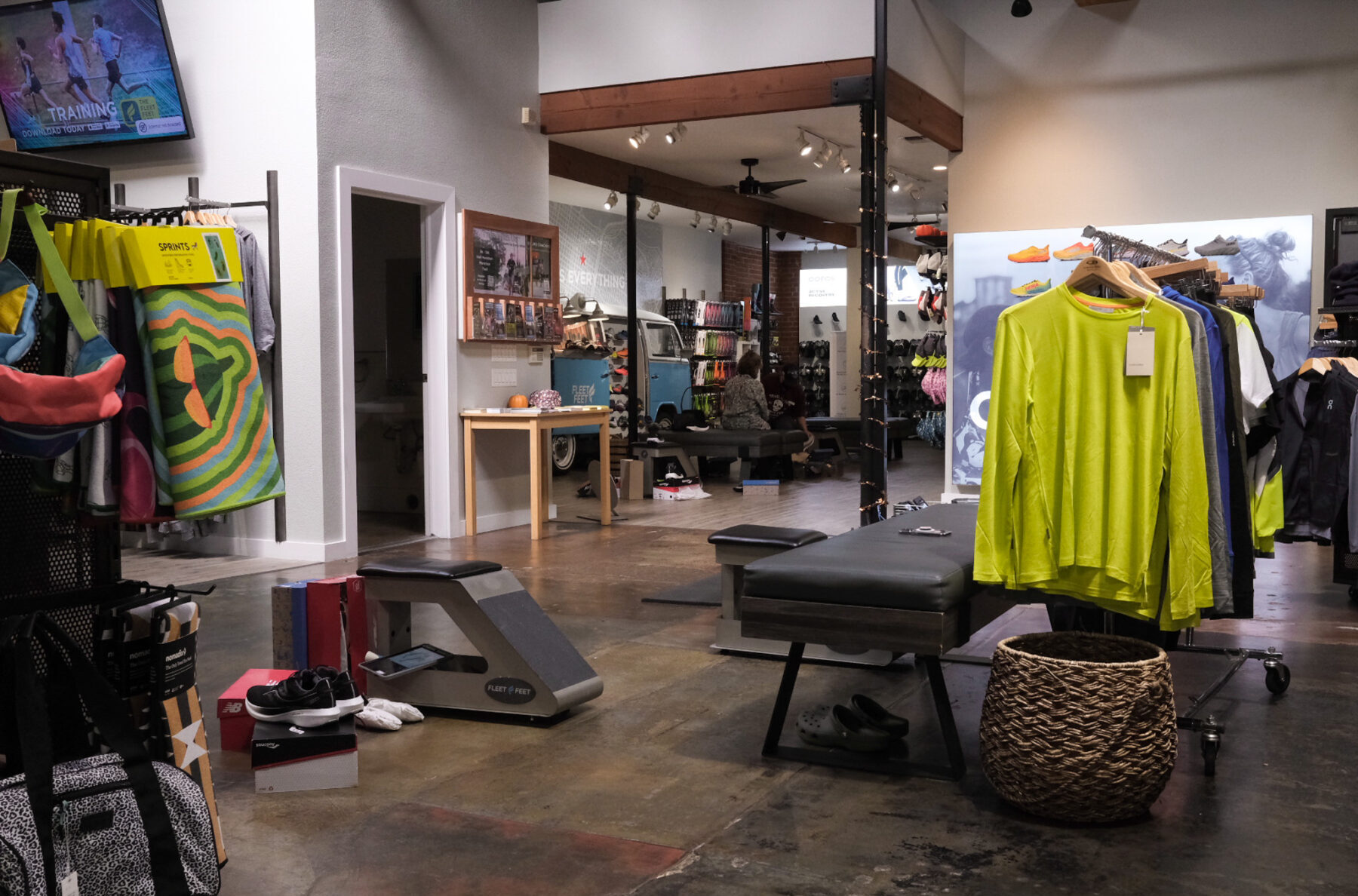
Molded from the concept of “shop as community hub,” Fleet Feet’s philosophy is best characterized as integrative; the shoes they sell are tokens to a culture organized around running. Weekly group runs, races, training plans, and events quilt together an inclusive experience that seeks to elevate people over products, a collective that creates a different kind of value. Displacing the transactional nature of retail with genuine connection is an attitude that has helped Fleet Feet endure the thinning of physical businesses. To combat the dopamine hit of one-click shopping, Fleet Feet doubles down on care, a benevolence I was clearly testing with my tardiness.
Self-conscious of how late I was, I took a few beats to stretch myself into a standing position before heading for Fleet Feet Sacramento’s red brick facade. I’m compulsively on-time, and the prolonged drive up from San Francisco with nothing to do but sit with the knowledge that I must be keeping some very kind people waiting wracked me with guilt. Once through the doors, I coyly introduced myself to a staff member, explained why I was there, and anxiously garbled through an excuse as to why I was so late.
The store thronged with customers, many paired off with outfitters in conversation about this type of shoe or that, their voices building into a symphony composed of bits and pieces of dialogue. These outfitters worked by feel, choosing their spots, playing off one another with instinct like the closing lineup of the 84’ Chicago Bulls. Decisions were made with unerring confidence amidst an influx of foot traffic, a coolness revealing the depth of their training. After puttering around the perimeter of the apparel section waiting for one of them to free up, every so often removing a hangared shirt, holding it up against my chest, then pursing my lips in approval, I was paired with Brandon. Roughly similar in age, he looked like he had either just finished a run or was about to start one, which inspired the same kind of confidence I get ahead of dining at Italian restaurants captained by massive chefs. We walked to a nearby bench and got started.
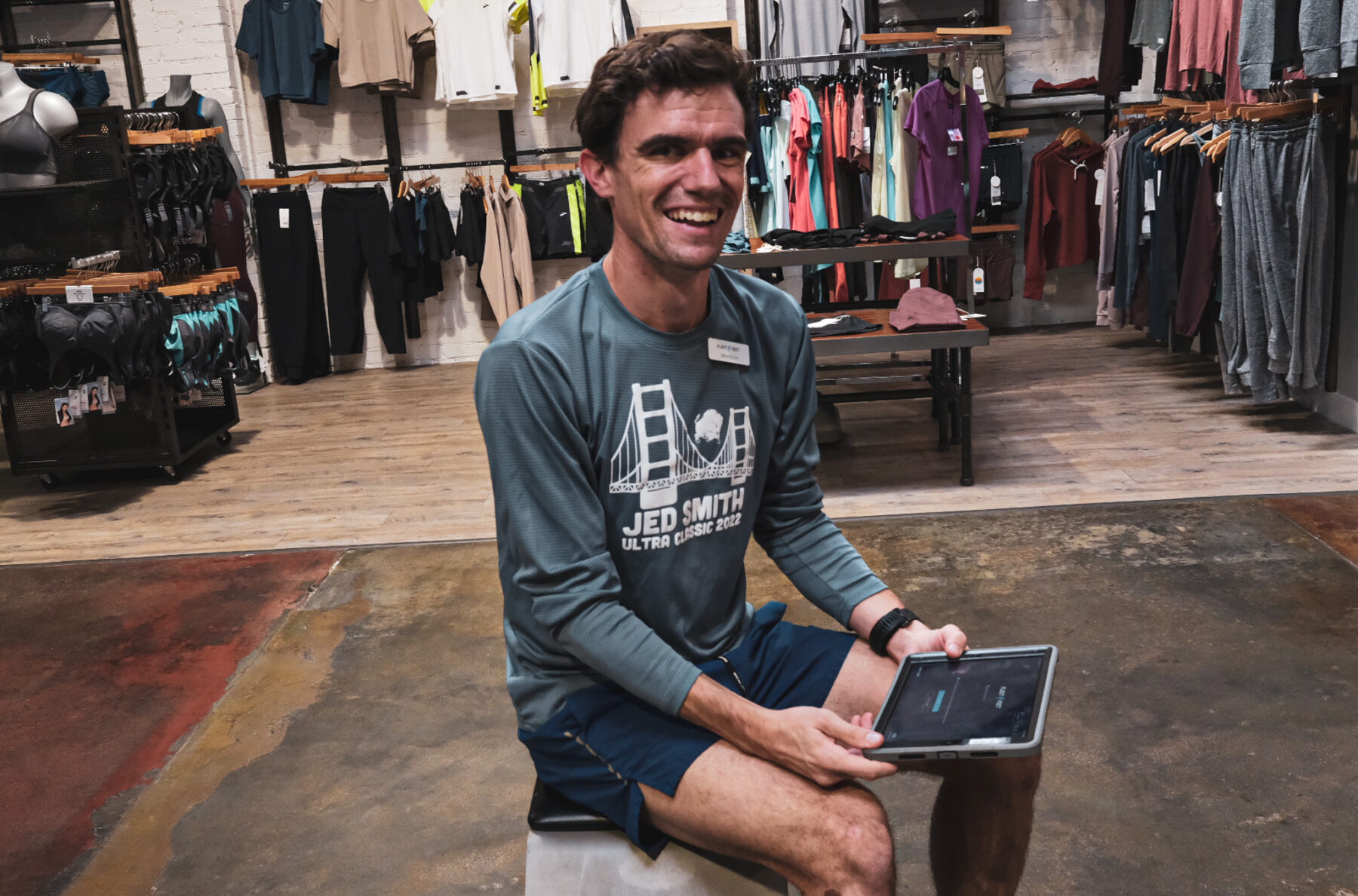
Fleet Feet’s Outfitting Process is a marriage between the new and the old. While its format relies heavily on technology, it does not use it as a crutch; every outfitter I interacted with, including Brandon, casually wielded a nuanced understanding of shoe fitting only garnered from experience. Thorough training seemed to form the backbone of Fleet Feet’s approach, something I sensed from the kinds of questions Brandon asked about my running history, foot anatomy, and training goals. He knew the relevant pieces of information to lure out of me, and I could see him shuffling through different models in his head as we spoke.
After settling on what would likely be a pretty neutral-fitting trail shoe with ample cushioning, he ushered me over to a white platform not much bigger than a bathroom scale, with lamp-like arms raised on all four sides, the heads of which were tilted toward the center where directional dots marked where I was supposed to stand. This was Fleet Feet’s “fit id,” a scanning technology that produced a complete 3D image of both of my feet before I could really make sense of what was going on. Precision cameras traced the contours of my arches, the alignment of my heels, the length of my instep, and took various other measurements — 12 in all -– to construct a 3D rendering of everything from my ankle down. Next, Brandon had me pace back and forth on their “Dynamic Pressure Mapping System,” a short rubber runway that looked much more terrestrial than the fit id and would record the motion and weight distribution of my stride.
Less than 3 minutes passed until we were seated back down, huddling over a tablet on which he had organized the readings from both devices into an interactive facsimile of my feet. Outfitters create a personal profile for each customer they help, an easily navigable file containing their 3D scans that is emailed to them after they leave and saved for future visits. Measurements are also collated in Fleet Feet’s database of over 3 million unique scans in an effort to help standardize foot shapes. Scrolling through my readout, I was nonplussed to learn that my left foot is nearly an entire size smaller than my right, an expensive problem to have! My “ball girth” is about symmetrical though, a joke Brandon was generous enough to reward with a chuckle, even the fourth time I made it. The 3D scan and pressure plate reading more or less corroborated what we thought I needed in a pair of shoes, so he bounded off to the store’s backstock to round up a couple of options.
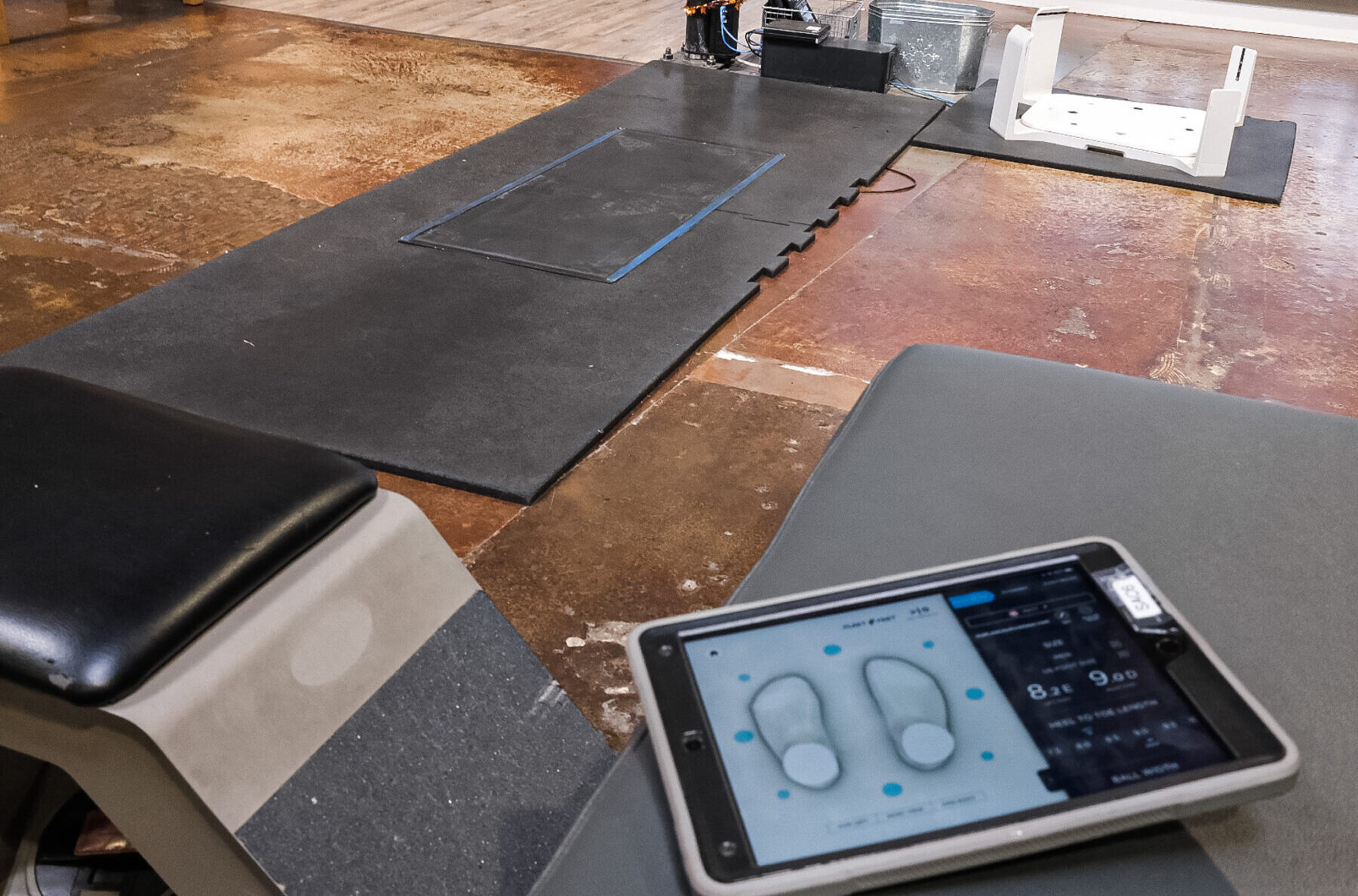
As I waited, I furtively glanced back in the direction of the fit id’s platform and pressure plate, watching as one unassuming customer after another was led by their outfitter through the scanning process. It was impossible to ignore the uncanniness of it all, at once foreign and recognizable. I had been siloed in the conventional ways of shoe fitting for so long that any change felt jarring, but what I was watching — and what I had just gone through myself — seemed undeniably right, one of those scenes that will likely be unremarkable in a few years time because of its commonness.
The typical retail experience found in most running stores has remained pretty much unchanged since my childhood, a familiar routine that can be a source of comfort by virtue of meeting our expectations; we know the dance when we walk through the door. Fleet Feet’s Outfitting System, while definitely a different type of jig, improves upon the way we should be fitting runners for shoes not by entirely reengineering the retail experience, but rather by strengthening its cornerstone: a roster of well trained and knowledgeable staff. The bevy of data points, measurements, and renderings Fleet Feet’s fit id and Dynamic Pressure Mapping System provide are designed to remove speculation from the fitting process, a clearing of doubt that instills confidence in the outfitter and customer alike. However, the usefulness of these technologies depends on a human component, someone with a discerning eye toward the needs of runners and an understanding of shoes, and that’s exactly the type of people Fleet Feet’s culture attracts.
Brandon returned, his upper half hidden behind an expertly balanced stack of shoeboxes he deftly laid out before me. We moved through the various models together, assessing how each one fit based on my scans and what Brandon could glean from the way I trotted around the store. This exchange felt ritualized, something I had motioned through hundreds of times at running stores across the country, though it had always felt undercut by a kernel of distrust in the past, whether of the person fitting me or my own perception. Knowing that each shoe brought out to me had been hand picked on the basis of hard evidence mixed with running experience dissolved any skepticism I might have had toward the fitting process. A pair of the Karhu Ikoni Trail 1 — the first option Brandon submitted, with confidence — ended up being the clear winner, though all three of the models I sampled carefully addressed the needs of my foot. Shoes in hand, I moved against the steady flow of customers attempting to merge through Fleet Feet’s doors, happy about what so much traffic said about the store.
